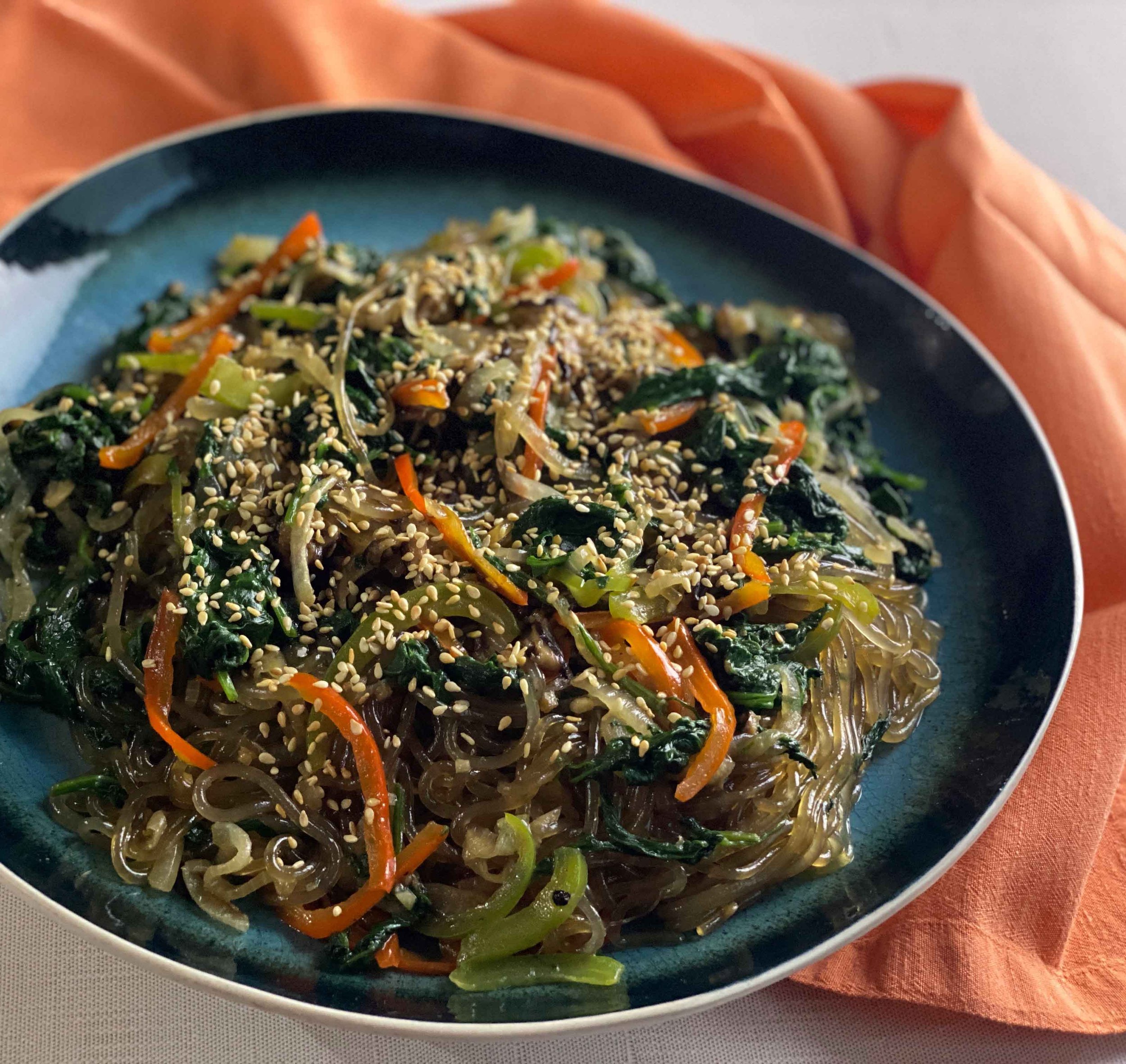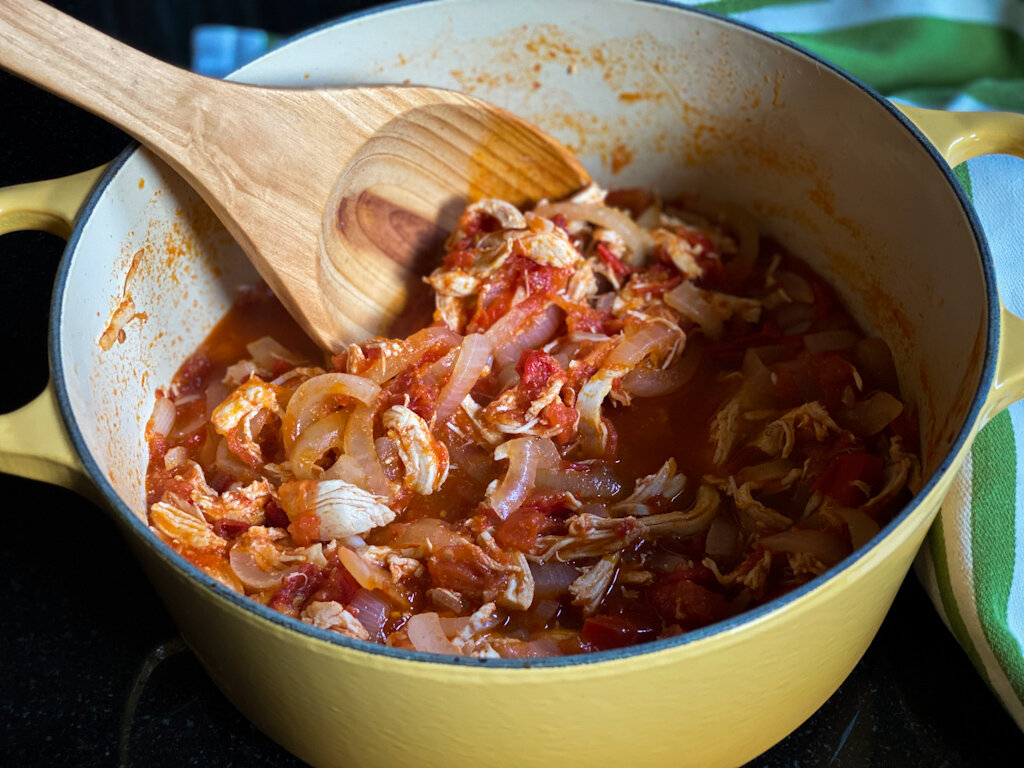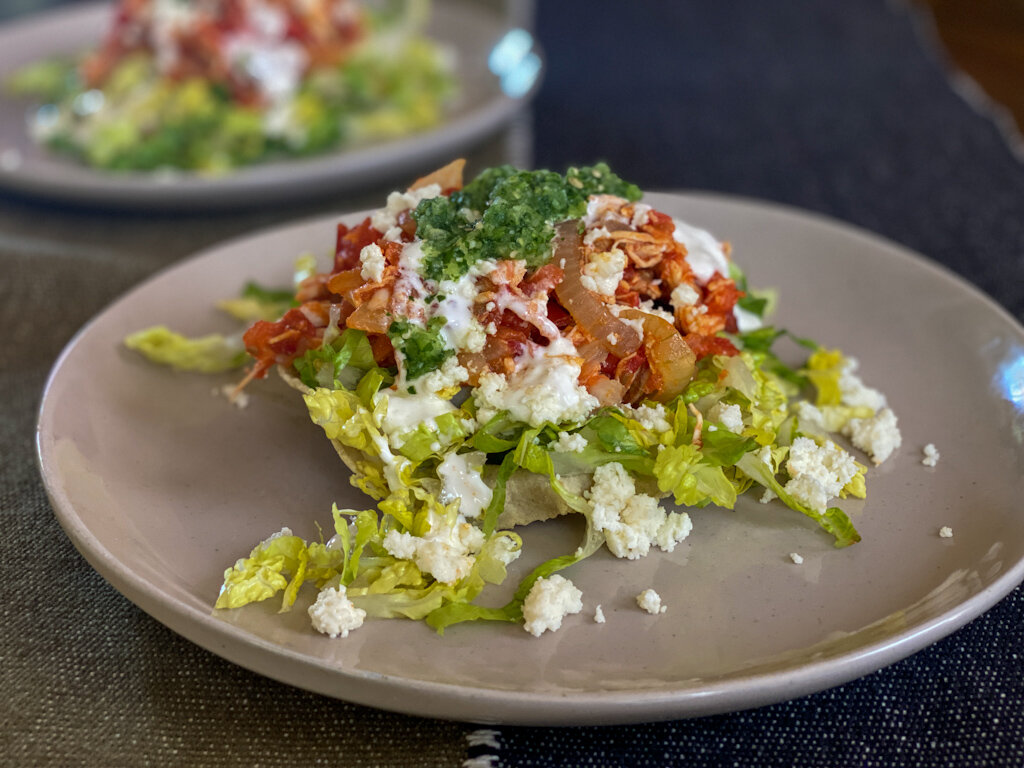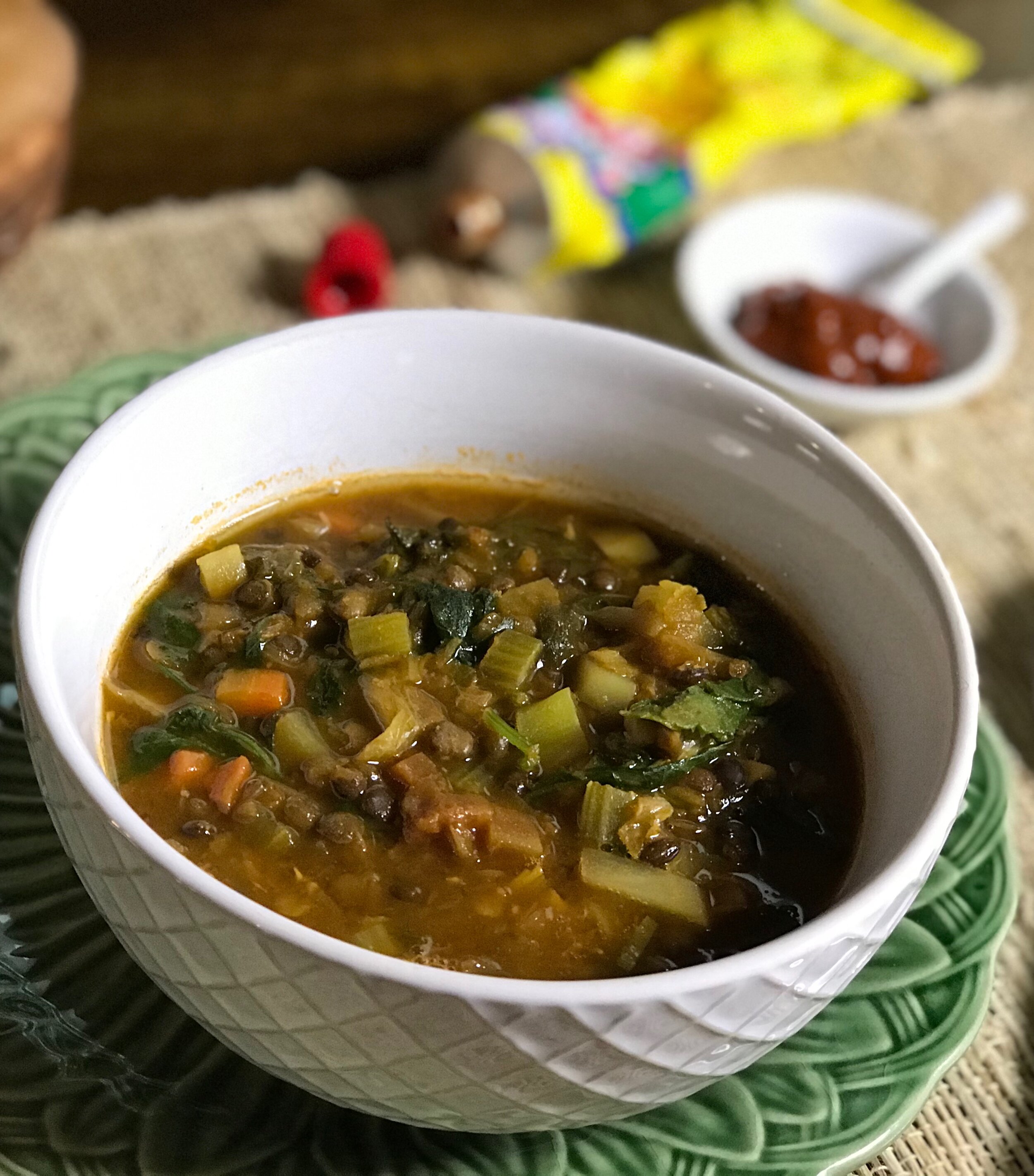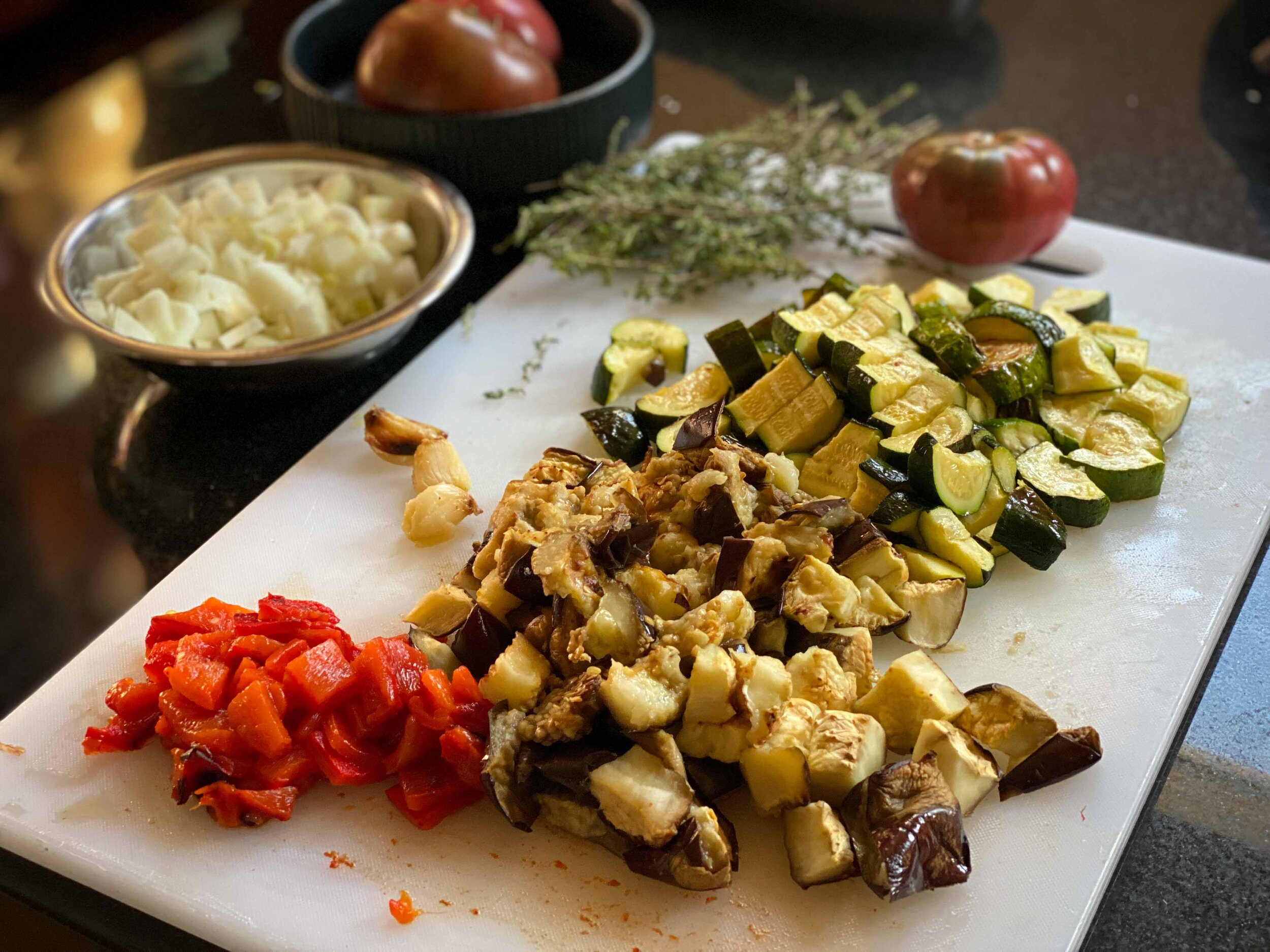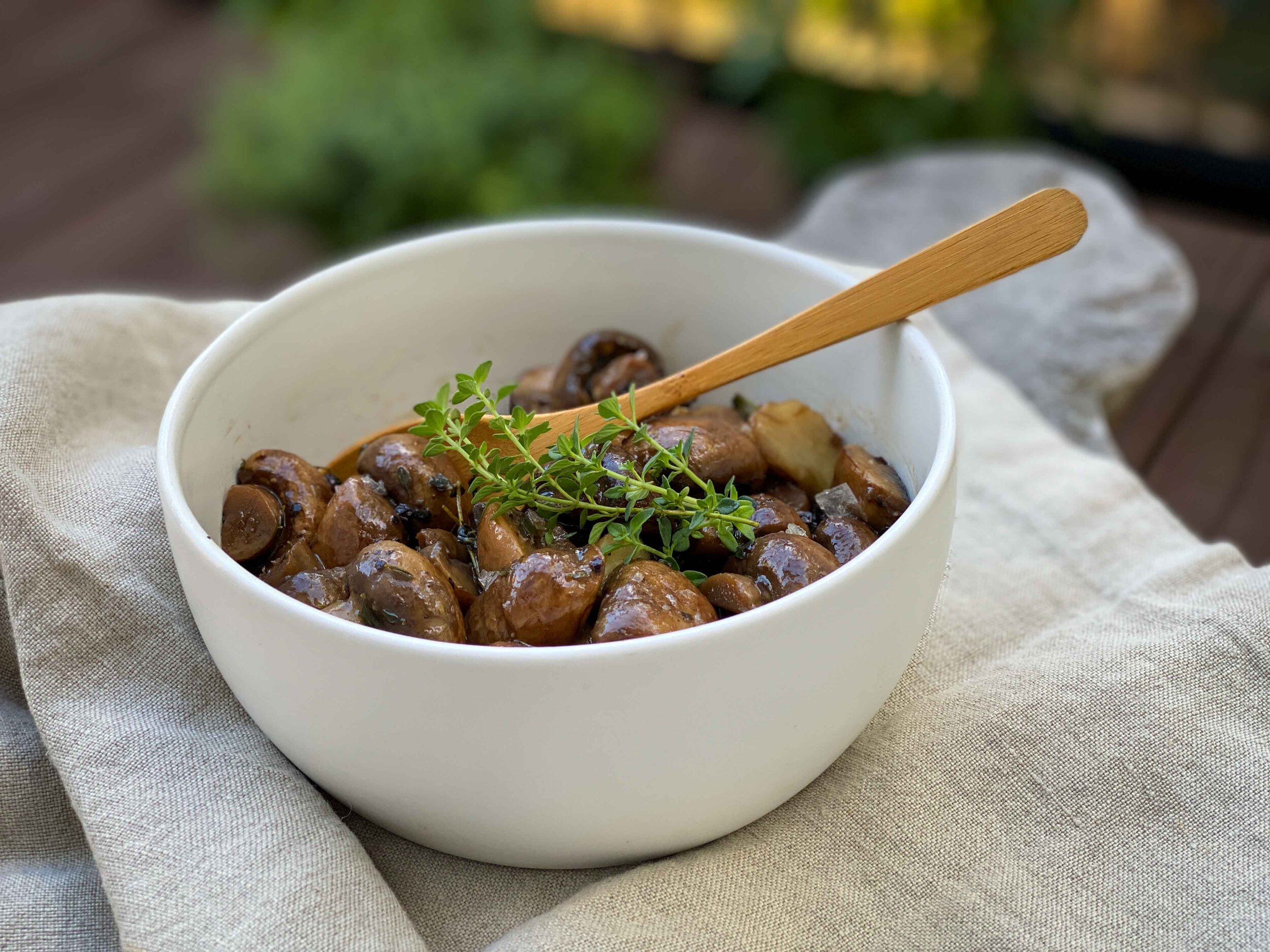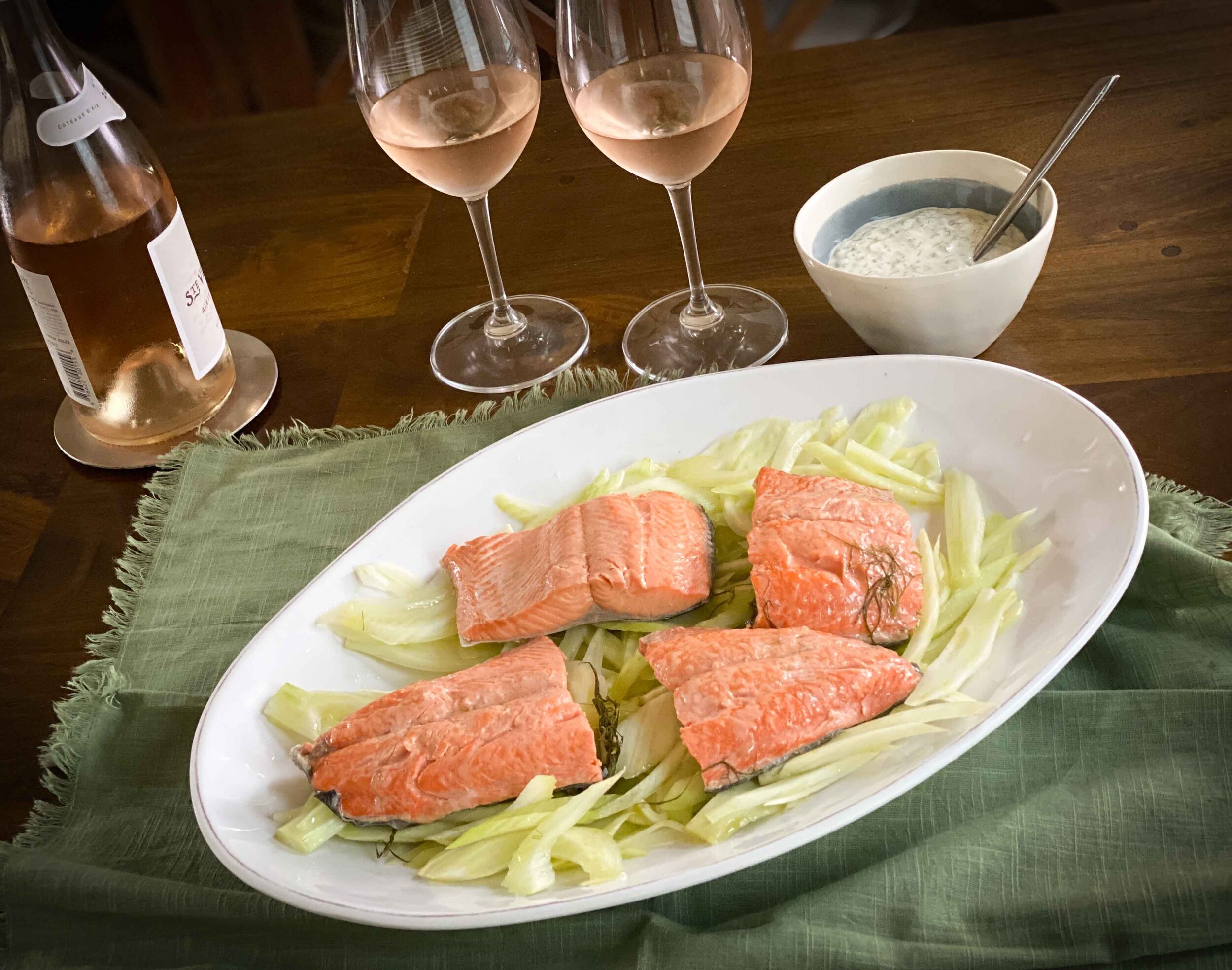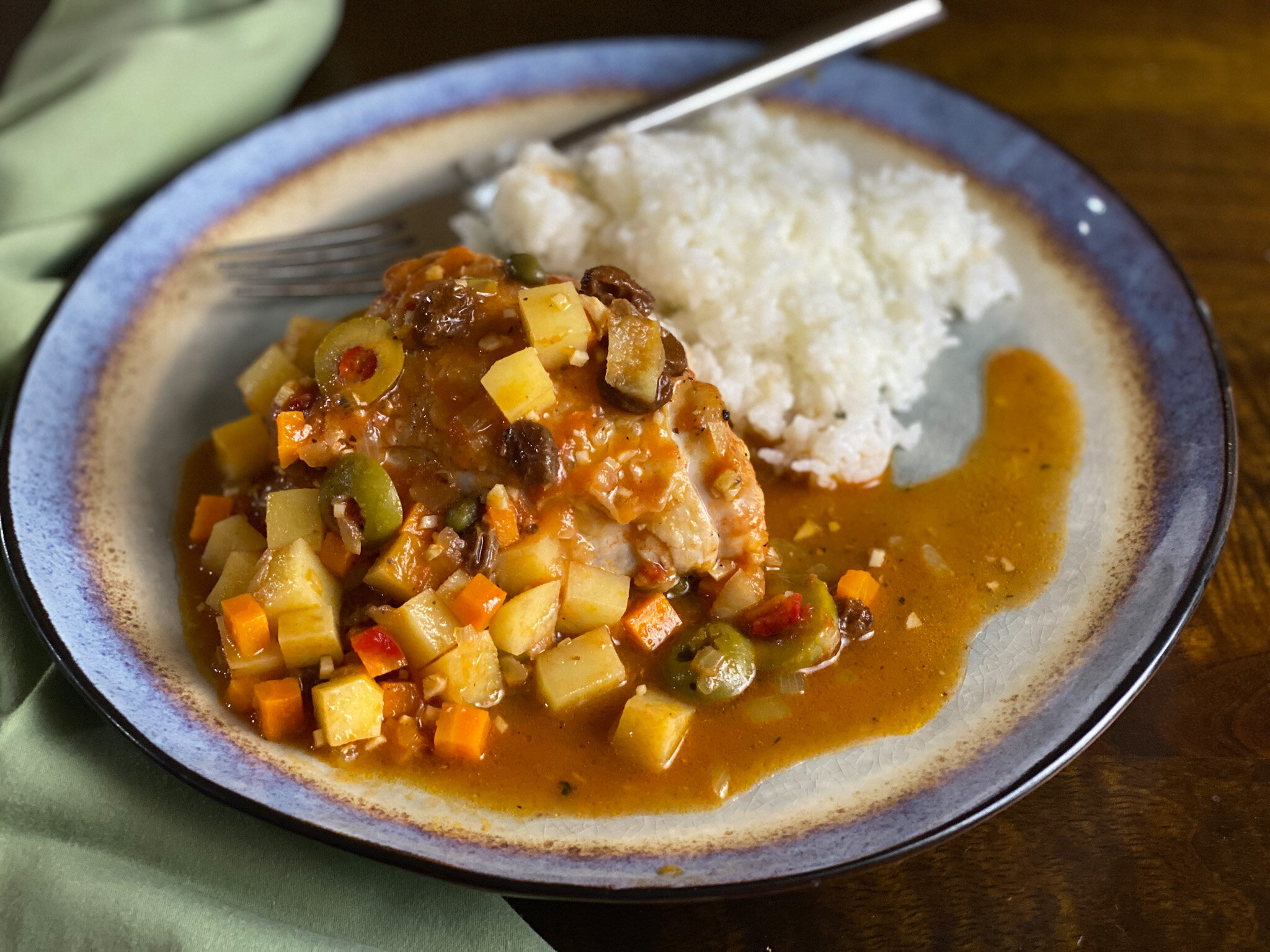By Leslie Brenner
When you come right down to it, we’re all looking for the same elusive thing: Weeknight dinners that are quick and easy to make, delicious and satisfying. And if they can also be craveable, gluten-free and made in just one pan, so much the more fabulous.
An Italian-flavored Rapini, Cannellini and Italian Sausage Melt I recently concocted fits that bill — and then some.
I spent most of my adult life whipping up, at least once a week, pasta with Italian sausage and broccoli rape (aka rapini, aka broccoli rabe). It has long been my favorite easy comfort dinner. Though the dish is traditionally made with orecchiete as the pasta shape, I always used penne — smooth ones, not penne rigate. I just enjoy them more than those flat little ear-shapes.
No need for a recipe to achieve that old standard: Just blanch a bunch of rapini (saving the vitamin-filled water to cook the pasta in), brown a pound of Italian sausage, add the rapini, cook the pasta (saving a little cooking water), add pasta to rapini and sausage, along with a little pasta cooking water, cook briefly, add grated parm, a shake of Aleppo pepper and serve. To me it’s one of the most simply perfect dishes in the world. Garlic is a welcome but not entirely necessary enhancement.
But at some point I seriously cut back on refined-flour products (along with sugar), and so the dish changed for us from once-a-week favorite to once-in-a-while special treat.
Then came The Great Confinement, and with it, the feeling that under the circumstances, we should be able to eat whatever we want. The pasta dish appeared on our table with increasing frequency, the longer the pandemic stretched out. I made it with whole wheat pasta a few times, but it tasted punitive.
Beans, I thought. Beans and greens: Such a dreamy combo. Why not swap the pasta for cannellini beans — from a can, so it’s quick and easy? With the Italian sausage, of course. And Parm stirred in at the end.
It was good, but it wasn’t craveable. It wanted some spicy zing, and something melty on top.
Next time, I stirred in some harissa — North African chile paste kissed with caraway seed — and a bit of fresh rosemary. And then, after stirring in the Parm, I topped it with slices of fresh mozzarella. Not too much; I wasn’t looking for decadence, just irresistible, creamy deliciousness. Under the broiler it went, till it was bubbly and browning.
Eureka!!!
Treat yourself tonight, and let me know what you think.

